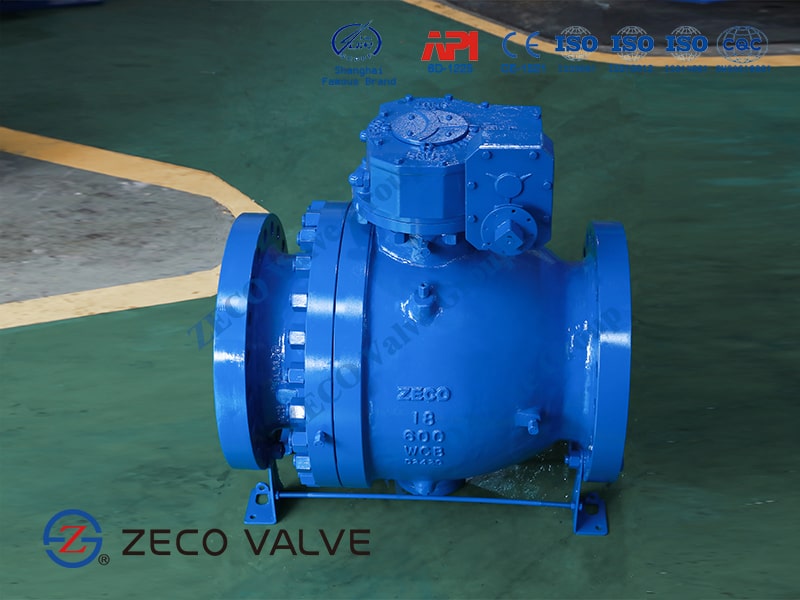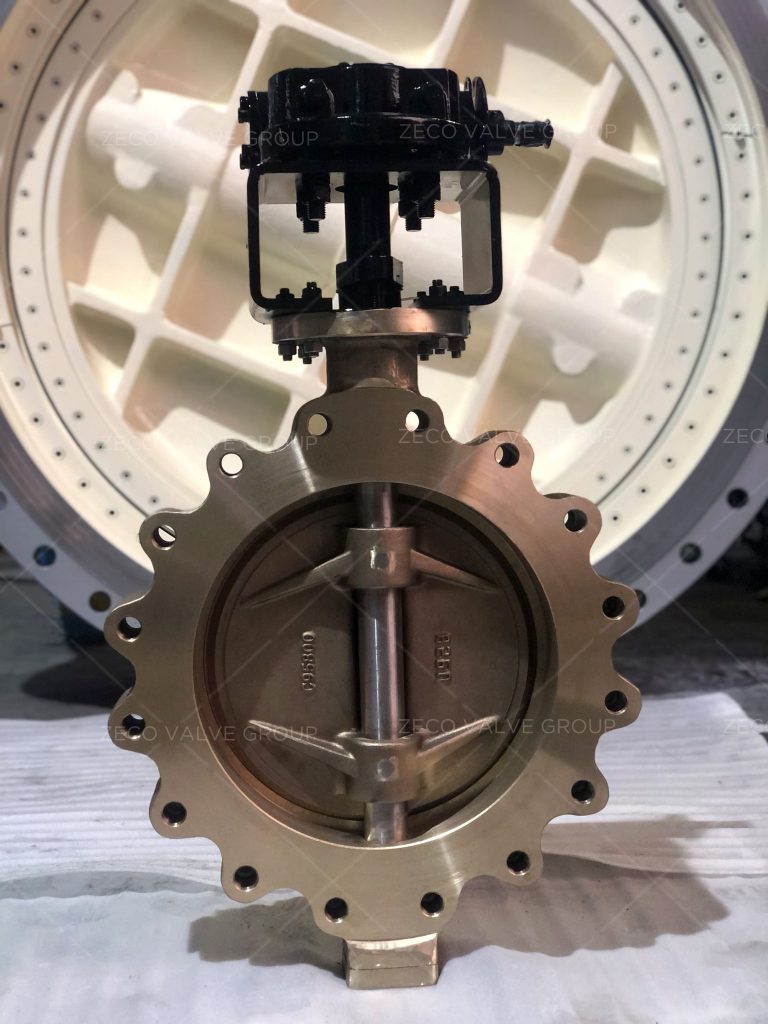What is API 6D Standard?
API Standard 6D, from the American Petroleum Institute, provides specifications for pipeline valves.
API 6D covers the design, manufacture, testing, and documentation for pipeline ball, check, gate, and plug valves for pressure ratings up to ASME class 2500.
The standard specifies configurations for the following types of valves:
- Gate valves
- Lubricated and non-lubricated plug valves
- Ball valves
- Check valves
- Full-opening valves
- Reduced-opening valves
- The valve ends may be flanged or welding. If fluid can become trapped in the body cavity, then valves for both gas and liquid service must have a pressure relief. Actuators may be electric, hydraulic, or pneumatic.
What is API 6D Ball Valve?
API 6D ball valves are designed and manufactured to provide maximum service life and dependability. All ball valves are full port or reduced port and meet the design requirements of API 6D. API 6D ball valves are available in a complete range of body/bonnet materials and trims. API 6D ball valves are available for the pressure ratings only: Class 150, Class 300, Class 400, Class 600, Class 900, Class 1500, and Class 2500.

Specifications of API 6D Ball Valve
| Design and Manufacture | API 6D |
| Wall Thickness | API 6D |
| Face-to-Face Dimension | API 6D |
| Flange End Dimension | ANSI/ASME B16.5 (1” to 24”) ANSI/ASME B16.47 (26” & up) |
| Butt-Weld End Dimension | ANSI/ASME B16.25 |
| Inspection & Testing | API 6D/API 598 |
| Fire Safe Design | API 607/BS 6755 |
| Material | Nace MR 0175 |
How does API 6D Ball Valve work?
API 6D ball valve works by using a ball with a bore at its center. The fluid flowing through the API 6D ball valves flows through the ball bore. To open the API 6D ball valve, the ball is rotated by rotating the handwheel or by using an actuator for actuated valves. The ball is connected to the handwheel or actuator via the stem. The stem transmits the torque needed to open/close the valve to the ball. When the ball is rotated the ball bore becomes in line with the pipeline transporting the fluid. This causes fluid to flow through the valve. To close the API 6D ball valve, the handwheel is rotated in the opposite direction to the direction of opening the valve. This makes the ball bore become perpendicular to the pipeline. In this case, the ball blocks the fluid such that the fluid cannot flow again. API 6D ball valve is connected to the pipeline using bolts and nuts connection or by welding. The bolts and nuts connection helps to make the API 6D ball valve easy to disassemble for cleaning and repairs while the valve is in the field. The welding connection makes the valve hard to open for repairs and cleaning. However, the welded connection makes the API 6D ball valve free from fluid leakage.
What is API 609 Standard?
API 609 standard covers design, materials, face-to-face dimensions, pressure-temperature ratings, and examination, inspection, and test requirements for gray iron, ductile iron, bronze, steel, nickel-based alloy, or special alloy butterfly valves.
The following two categories of butterfly valves are included:
Category A—Manufacturer’s rated cold working pressure (CWP) butterfly valves, usually with a concentric disc and seat configuration. Sizes covered are NPS 2 to NPS 60 for valves having ASME Class 125 or Class 150 flange bolting patterns.
Category B—ASME class and pressure-temperature-rated butterfly valves that have an offset seat and either an eccentric or a concentric disc configuration. Sizes covered are listed below:
for lug and wafer, Class 150 and 300: NPS 2 to NPS 60;
for lug and wafer, Class 600: NPS 3 to NPS 60;
for double-flanged short and long pattern, Class 150, 300, and 600: NPS 3 to NPS 60;
for butt-welding ends, Class 150, 300 and 600: NPS 3 to 60;
What is API 609 Butterfly Valve?
Butterfly valves have been in use because of the end of the 18th century. James Watt made use of a butterfly valve in his steam engine prototype. With advances in materials and modern technology, butterfly valves can be made smaller as well as can hold up against higher temperatures. After the Second World War, synthetic rubber was used for seals, enabling butterfly valves to be made use of in more sectors. In 1969, James E. Hemphill patented an improvement in the butterfly valve that lowered the hydrodynamic torque required to transform the valve’s outcome.

The butterfly valve is also called butterfly valve, as the name suggests, its essential components are like a butterfly against the wind and free turning.
The butterfly valve disc is the disc, around the seat of a shaft rotation, the dimension of the angle of turning is the valve open and also close.
The butterfly valve is a quarter-turn rotating movement valve used to quit, change as well as start the flow.
The butterfly valve can be opened up easily as well as promptly. The 90 ° rotation of the handle supplies complete the closing or opening of the valve. Large butterfly valves are usually equipped with a supposed transmission, where the handwheel is linked to the valve stem by equipment. This simplifies the operation of the valve, but at the expense of speed.
As a result of its small dimension, easy framework, as well as light-weight, butterfly valves are increasingly used in piping systems such as cool and hot air, water as well as electrical power, environmental protection, structure supply of water as well as water drainage, as well as community engineering. Used as a tool for intercepting or intermediary flow. On several events, due to the benefits of the butterfly valve itself, it has been possible to change gate valves, globe valves, ball valves, and various other valves in industrial pipeline applications.
The structure of the butterfly valve is very straightforward, with just a few basic parts such as the valve body, valve stem, valve disc, valve seat, and transmission. Although the framework is basic, the feature of the butterfly valve can not be ignored. The little framework has terrific practical value.
The butterfly valve can be used to readjust the flow. When the flow adjustment butterfly valve requires to be under special working conditions, or in a closed environment, the performance needs are stringent, or the operating problems of the butterfly valve are seriously worn, low-temperature level, and other harsh work.
We are API 6D Ball Valve Manufacturer and API 609 Butterfly Valve Manufacturer. If you are interested in our products, please feel free to contact us.
Related Tags :
Ten articles before and after
How To Maintain The Ball Valve | API 6D ball valve manufacturer
Do You Know Ball Valve? | API 6D ball valve manufacturer
The Difference Between Ball Valve And Gate Valve | API 6D ball valve manufacturer
The Way To Choose a Valve | API 6D ball valve manufacturer
Daily Maintenance And Maintenance Of Ball Valves | API 6D ball valve manufacturer
What Is a Rotary Valve | API 6D ball valve manufacturer
How To Use a Ball Valve | API 6D ball valve manufacturer
Why Do We Use Butterfly Valve? | API 6D ball valve manufacturer
Globe Control Valve | API 6D ball valve manufacturer
Gate, Ball And Butterfly Valves | API 6D ball valve manufacturer












